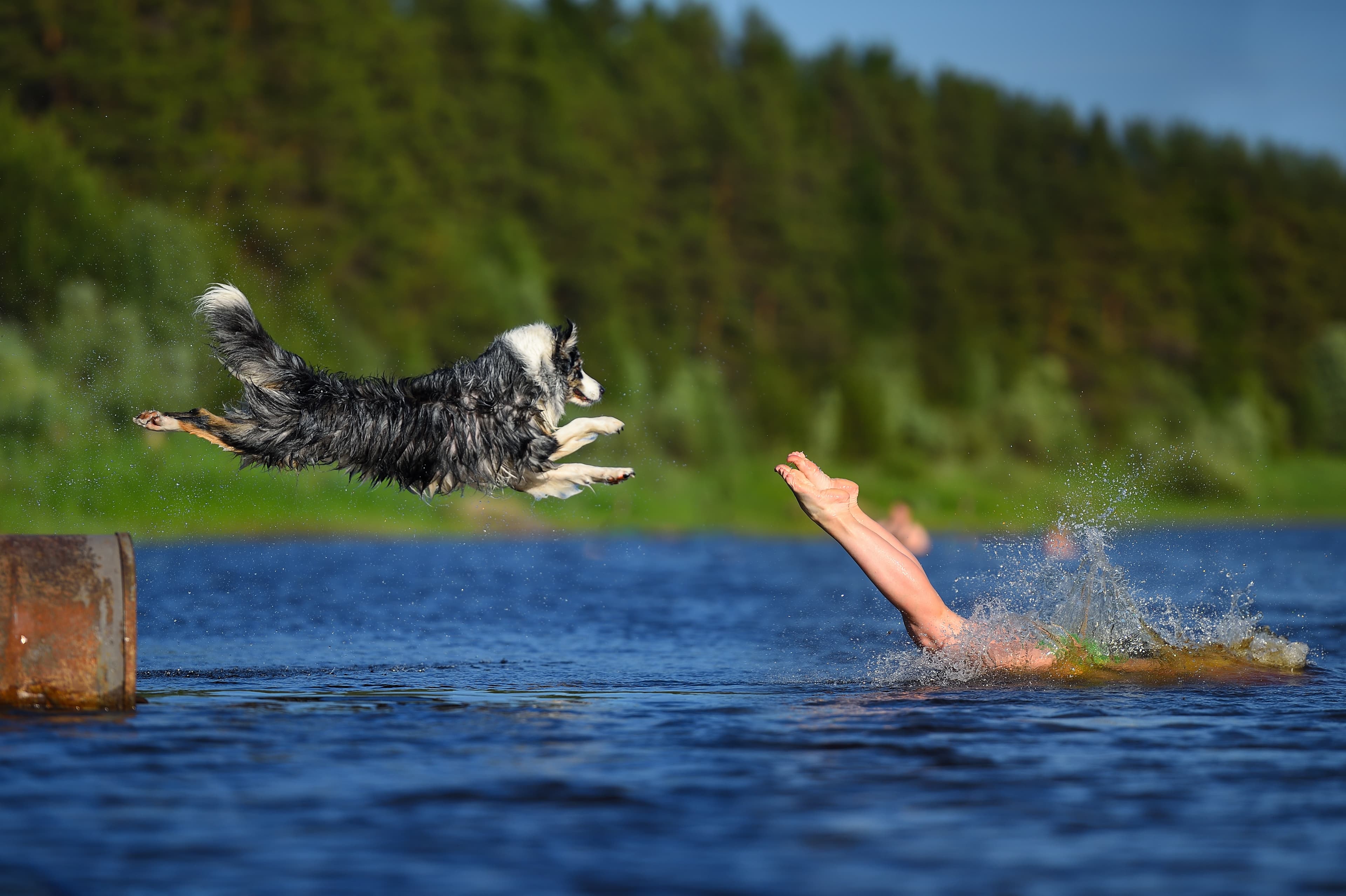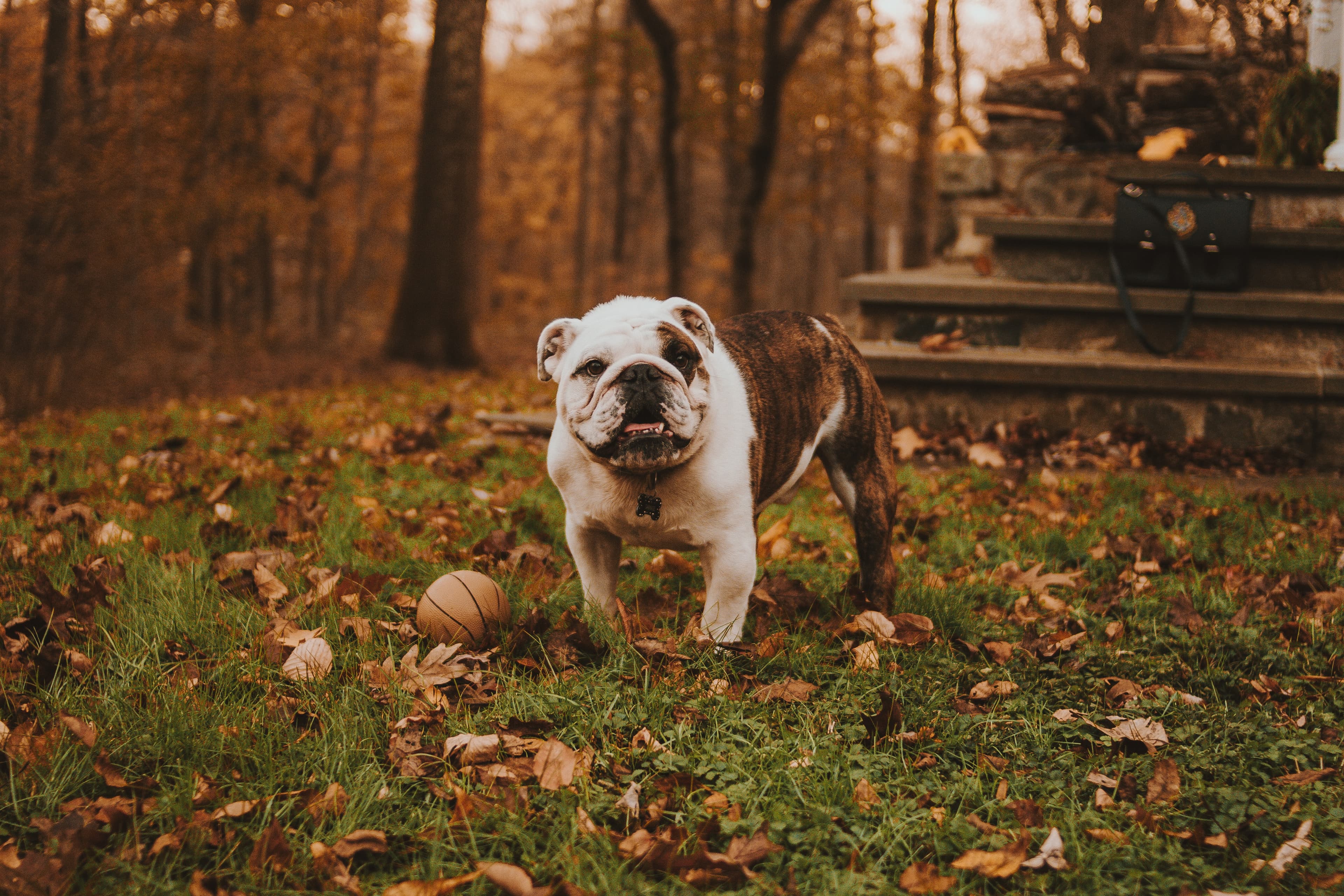Positive effects of swimming for dogs
Some dogs love bathing in water while others are very sceptical about it. Besides the fact that some dogs find swimming very enjoyable, there are positive aspects of swimming for dogs. As well as offering coolness for dogs on hot summer days, it can also be a great alternative to exercise for them in a way that is more gentle and kind to their bodies.
Benefits by swiming
Having a dog that loves to swim has many benefits, it's nice for the dog to cool off on hot summer days and if you like swimming yourself it can be an activity to do with your dog. You can also use bathing sessions for fun water games and gentle exercise for your dog.
Of course, there are also dogs who enjoy swimming less and have a more sceptical view of water than others. In these cases, it can be a good idea to get the dog used to water slowly, and with a little training you can get a dog that likes water better and may even like to swim after a while.
Although most dogs naturally have the instinct to paddle with their paws as soon as they touch the water, not all dogs can swim automatically. Many dogs first need to get used to the water and learn the right technique. Of course, not all dogs feel comfortable in the water. If your dog doesn't like to swim, you can try to train it to like water better. However, you should never try to force your dog to swim; instead, get your dog used to water gently through acclimatisation, play, treats or with another bath-loving friend leading the way.
Practice bathing in easy and accessible places. A beach where it's shallow and calm is a good place to start, so your dog can feel comfortable and safe and choose his own pace. Slippery rocks are not an ideal place for the dog to start swimming.
Toys, if your dog likes toys, it's a good idea to have a few around as an alternative to getting the dog used to water. Then the dog can focus on playing with them instead, after a while the dog often forgets that the water is unpleasant and instead starts to focus on the positive aspects of playing and bathing.
Treats, another option is to use treats instead. Put treats in the water so that the dog can walk around and eat them at his own pace. If the dog begins to accept wading and walking around in the water, the next step is to put the treats further out so the dog can swim and munch on them. If it turns out that after a few times the dog doesn't enjoy the water at all, the dog owner has to accept it. Some dogs just don't like water.
The first time the dog swims, they may look a little scared. Their front legs may be above the surface of the water and they may splash a lot before they know what to do. But once they realise they're floating, they calm down pretty quickly and the swimming technique usually comes automatically. If you want to help your dog understand that they are floating, you can wear a life jacket the first time you go swimming together. Most life jackets have a handle on the back that you can hold, this way you will be a great reassurance for your dog the first time they swim.
Here are some other good things to think about before swimming:
Always supervise your dog when swimming. If you have a dog with a hunting instinct that might swim out towards birds, for example, you should of course keep your dog under controlled conditions when you swim. Swimming should be done in conditions that are pleasant for all involved. Therefore, also make sure that the bathing area is permitted and applied for dogs to be in, and remember that some people may be afraid of dogs. This should of course be respected and if you are swimming with your dog you should stick to a bathing area where the dog is welcome. As a rule, dogs are not welcome at public bathing areas but some municipalities are good at setting up special dog baths.
In the water areas you plan to be in, it's a good idea to keep an eye on the status of algal blooms. If algae blooms are present, your dog should not swim, as it could suffer from algae poisoning, which is life-threatening.
Please dry your dog after bathing, especially if you have an individual who is more prone to developing eczema or watery tail, for example. Water tail is relatively common in dogs that like to swim a lot and can develop if the dog's bottom gets very cold. Damp eczema in dogs is also more common during the hot and humid periods.
If you have a bathing-loving dog who wants to swim constantly and doesn't know when to stop on their own, include appropriate and sufficient breaks for recovery. In dogs that really love to swim, it can get very intense so it's good to think in moderation so that your dog doesn't tire themselves out so much that they can't bear to go afterwards.
When boating with your dog, it is recommended that they wear a life jacket just like humans. Choose a lifejacket that is appropriate for your dog's size and weight.






